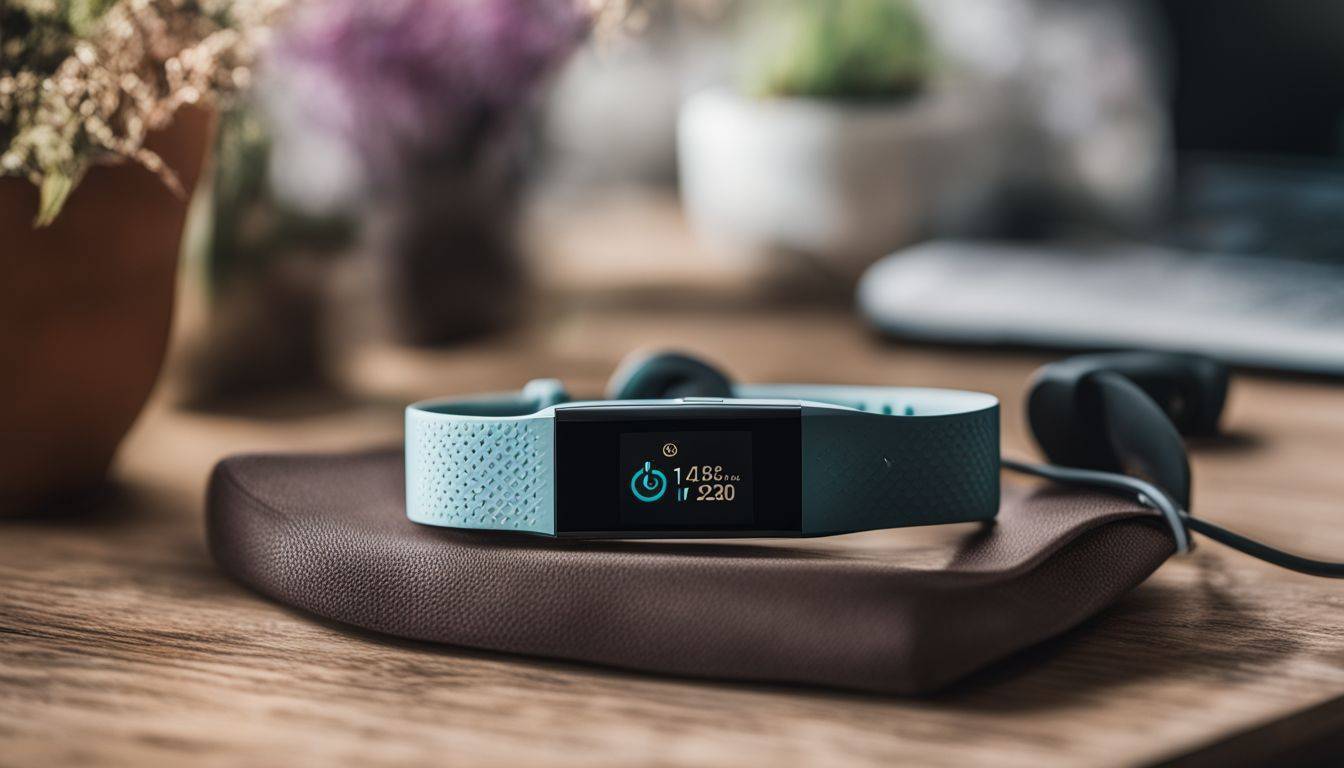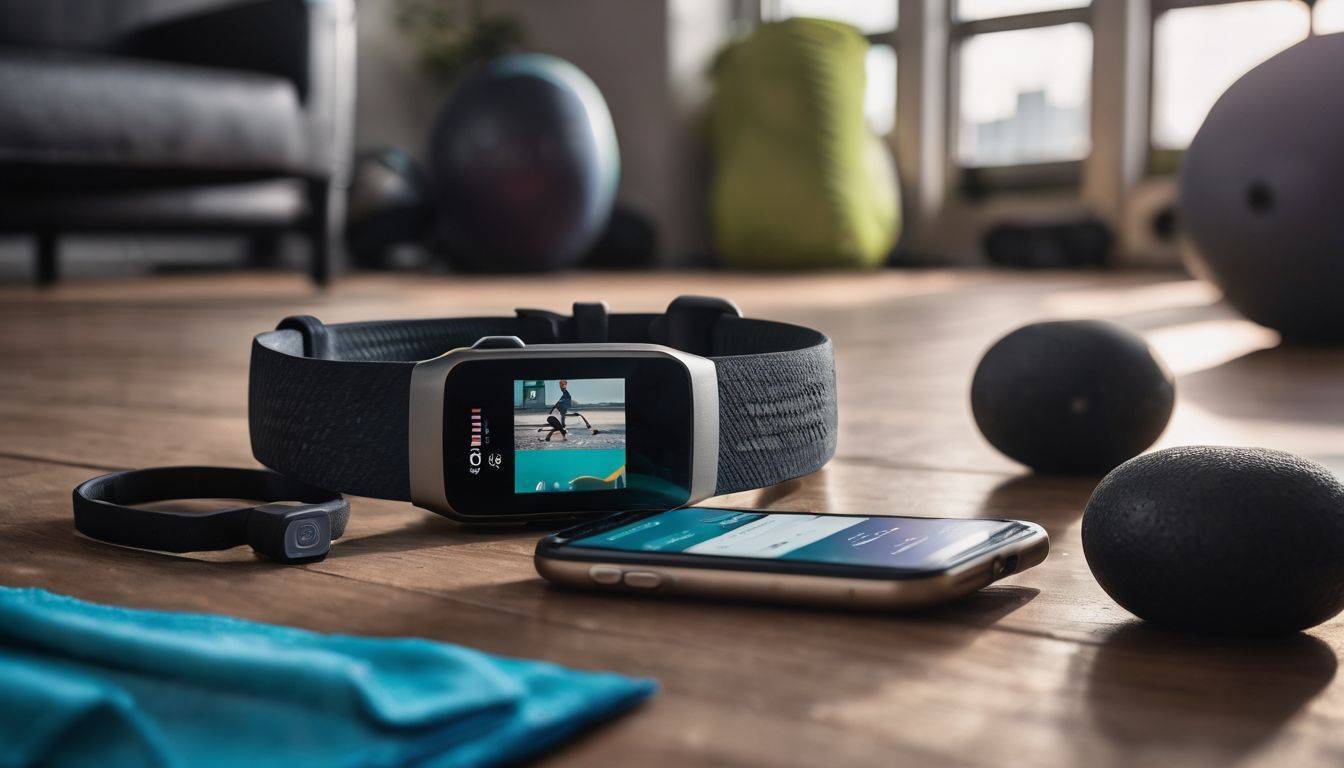Many of us rely on Fitbit devices to monitor our fitness progress, wondering just how accurate they are. Fitbits have become the pocket-sized personal trainers for people looking to track their daily activity and health metrics.
This article peels back the curtain on Fitbit accuracy, offering insights into what’s working well and where there might be gaps in tracking. Read on to know how well are your calories burning, steps, heart rate and sleep being tracked?
How Fitbit Devices Track Data
 Fitbit devices harness an array of sensors and algorithms to monitor your daily activities, transforming raw data into insightful health metrics. From the number of steps you take to the quality of sleep you get at night, these gadgets strive to provide a comprehensive view of your wellness journey.
Fitbit devices harness an array of sensors and algorithms to monitor your daily activities, transforming raw data into insightful health metrics. From the number of steps you take to the quality of sleep you get at night, these gadgets strive to provide a comprehensive view of your wellness journey.
Steps Counting
Counting steps seems simple, but it’s tricky to get just right. Your Fitbit works hard to record each step you take. Sometimes, though, it might miss a few or think you walked more than you did.
If you walk slowly, the device may add extra distance. When you speed up, it may not count enough.
Your body’s position and how it moves can change your step count too. If your arms are still while walking or if the Fitbit is in your pocket instead of on your wrist, numbers could be off by about 9%.
Keep this in mind and check where and how you wear your tracker for the best results.
Heart Rate Monitoring
Fitbit devices track your heart rate using a built-in accelerometer and special algorithms. They read your pulse best when worn on the wrist, especially while jogging. But they may not always nail it; movements and placement affect their readings.
To get a better handle on your ticker’s tempo with Fitbit, keep it snug against your skin. Fine-tune those app settings for more precise results.
Now let’s dive into sleep tracking—another cool feature of Fitbits that helps you understand how well you’re resting at night.
Sleep Tracking
Your Fitbit tracks your sleep with a mix of sensors and smart software. It spots the times you’re asleep, awake, or restless during the night. The app shows how much light, deep, and REM sleep you get.
This tells you if your sleep is good enough to help your body recover.
Experts have checked how well Fitbit devices measure sleep in research settings. They found that these gadgets can be pretty spot on. You can see when you go to bed, wake up, and all about your sleep habits right in the Fitbit app or dashboard.
Next up: How does a Fitbit figure out calorie burn? Let’s find out!
Calorie Burning
Transitioning from sleep to activity, calorie burning is a key focus for many fitness enthusiasts. The Fitbit device offers an estimate of how many calories you burn throughout the day and during workouts.
It does this by combining your basal metabolic rate with activity data.
Fitbit devices have been studied for their accuracy in tracking calorie burn. In 2017, research highlighted the Fitbit Surge’s precise calorie counting compared to rivals like the Apple Watch.
Even so, individual results can vary due to factors such as skin tone, fit of the device, and type of exercise. Knowing this helps users set realistic goals and understand their progress better.
Blood Pressure Measuring
Fitbit devices can track many things, but they do not measure blood pressure. This means if you want to keep an eye on your blood pressure, you’ll need a separate device designed for this task.
Blood pressure monitors usually wrap around your arm and give you a reading. If checking blood pressure is key for managing your health, it’s best to use a tool made just for that.
For those curious about their heart rate during workouts or throughout the day, Fitbit does offer that feature. It uses sensors to watch how fast your heart beats and gives you real-time info.
Accuracy of Fitbit Devices

When delving into the precision of Fitbit devices, one can’t help but wonder – are these gadgets trustworthy sidekicks in our fitness journey? Let’s explore what research reveals about their ability to gauge everything from your nightly slumber patterns to your daily calorie burn.
Results from studies
Understanding the precision of Fitbit devices requires a dive into research findings. Various studies have gauged the accuracy of these wearable technologies, focusing on their capacity to track steps, heart rate, sleep, and even calorie burn. Let’s explore what the data tells us.
| Function | Summary of Accuracy | Study Findings |
|---|---|---|
| Steps Counting | Acceptably accurate 50% of the time | Fitbits can underestimate steps with errors ranging from -24% to -4% depending on speed. |
| Calorie Burning | Significant accuracy in comparison to other devices | The Fitbit Surge outperformed the Apple Watch and Samsung Gear S2 in calorie count accuracy. |
| Heart Rate Monitoring | Generally accurate with minor discrepancies | Deviation is minor, but factors like movement and placement can impact readings. |
| Sleep Tracking | Overestimates sleep time and efficiency | In both controlled and free-living settings, Fitbits overestimated sleep by more than 10%. |
| Blood Pressure Measuring | Not a primary function; no data available | Fitbit devices do not measure blood pressure, thus no study results are available. |
This table offers a compact view of Fitbit’s performance in key tracking aspects. It highlights the need for potential calibration and mindful usage to ensure the highest data fidelity. Armed with this understanding, we aim for improved accuracy in our fitness journey. Moving forward, let’s consider ways to fine-tune the precision of the data your Fitbit collects.
Factors that can affect accuracy
Fitbit devices track your health and fitness in many ways. But several factors can influence how well they do this job.
- Body Placement: The spot where you wear your Fitbit affects its accuracy. For counting steps, clip it to your waistband or wear it on your wrist. When doing exercises like biking, secure it tightly on the part of your body that moves most.
- Type of Movement: Slow or irregular movements can confuse a Fitbit. If you’re strolling slowly or moving your arms without walking, the device might not count all of your steps accurately.
- Environment: Walking on soft surfaces like carpet may cause fewer steps to be recorded. Harder surfaces give better results because they create a firmer impact for the sensor to detect.
- Physical Contact: Your Fitbit should touch your skin for proper heart rate tracking. Tighten the band before workouts to ensure close contact and loosen it once you’re done.
- Personal Information: Update your app settings with precise personal info. Include correct details about your height, weight, and age for more accurate calorie burn estimates.
- Consistent Wear: Take off your Fitbit too often and it will miss out on capturing important data. Wear it consistently for a complete picture of your daily activity and rest periods.
- Device Maintenance: Keep your device clean and charged for uninterrupted tracking. Dust or moisture can affect sensors, while low battery power might reduce performance.
Tips for Increasing Accuracy of Fitbit Data
Even the most sophisticated technology can benefit from a personal touch — fine-tuning your Fitbit’s settings and usage can elevate its precision, ensuring that the data it captures becomes an even more powerful tool in your fitness journey.
Understanding how to optimize your device will empower you to gain the most accurate insights into your daily activities and health metrics.
Wear the device correctly
Fitbit devices work best when worn correctly. Keeping them close to your body boosts their accuracy.
- Make sure the device touches your skin. It should be snug but not too tight.
- Put the Fitbit on your non – dominant wrist for better step counting.
- Clean the band and your wrist regularly to keep the sensors clear.
- Adjust the band so it stays put during workouts or running.
- Wear your Fitbit higher on your wrist when exercising for improved heart rate data.
- Move the Fitbit to a clip in your pocket for accurate step counts if you’re pushing a stroller or cart.
- Secure the device firmly to prevent it from moving around too much, which can mess with the sensors.
Adjust app settings
Adjusting your Fitbit app settings can make a big difference in how accurate your data is. You get better results when the device knows more about you. Here’s how to fine-tune those settings:
- Set your wrist orientation correctly. Choose whether you wear your Fitbit on your dominant or non – dominant wrist in the app.
- Update your stride length. Measure your stride for walking and running, then enter these numbers in the app.
- Enter accurate personal information. Your height, weight, and sex help Fitbit calculate calories burned more precisely.
- Use the exercise app for specific activities. Log workouts like yoga or HIIT to track them more effectively than general daily activity.
- Calibrate heart-rate settings. Follow guidelines in the app to ensure heart-rate data is as accurate as possible.
Change where the device is worn
To get better results, try wearing your Fitbit on different parts of your body. For some activities, the wrist isn’t always the best spot. You might find that clipping it to your torso or strapping it around your ankle gives you more precise data.
Always make sure the device sits snug against your skin.
Moving your Fitbit can help with accuracy for steps, heart rate, and calorie tracking. If you’re cycling or lifting weights, for instance, an ankle position could catch those movements better than the wrist.
Experiment with locations but refer to the manual so you don’t miss a beat—or a step!
Conclusion
Fitbits emerge out as the best fitness trackers in the market. They count steps, measure heart rate, and track sleep pretty well. But remember, they’re not perfect – various factors can change their accuracy.
You’ll get the best results by wearing them right and adjusting settings for your body. With these tips, you’ll make your Fitbit work even better for you!
